The Castrejo Trail, in Castro Laboreiro, is one of the most beautiful and iconic hikes in Peneda-Gerês National Park. It takes you through the typical landscapes of this mountainous region, alternating between rural paths, forests, and mountain trails.
It’s a long hike with some elevation gain — as expected in such a rugged area — so plan to spend the whole day doing it. And keep in mind: Castro Laboreiro lies in the far north of Portugal, and getting there can take a while, but it’s absolutely worth it.
Although we know the park quite well, we had never explored this area before. We were completely taken by the beauty and grandeur of the trail. If you can, don’t miss visiting Castro Laboreiro and hiking the Castrejo Trail.
This route allows you to truly experience the mountain atmosphere of Gerês, both in its wildest side and in the traces of human presence. It’s well-marked and pleasant to walk, though the biggest challenge is definitely the distance.
Castrejo Trail – Pratical Information
- Name: Castrejo Trail – PR3 Melgaço
- Start: Castro Laboreiro, next to Hotel Castrum Villae
- End: Same as the starting point
- Distance: 16.8 km (10.4 miles)
- Duration: 6–7 hours, depending on pace and fitness level
- Difficulty: Moderate to hard
- Max/Min altitude: 1121 / 752 m (3678 / 2467 ft)
- Elevation gain: 836 m (2743 ft)
- Type: Circular
- Waymarking (1–5): 5 – Excellent
- Highlights: Ponte Nova, Laboreiro River, Branda de Seara
- You can download the official leaflet here.
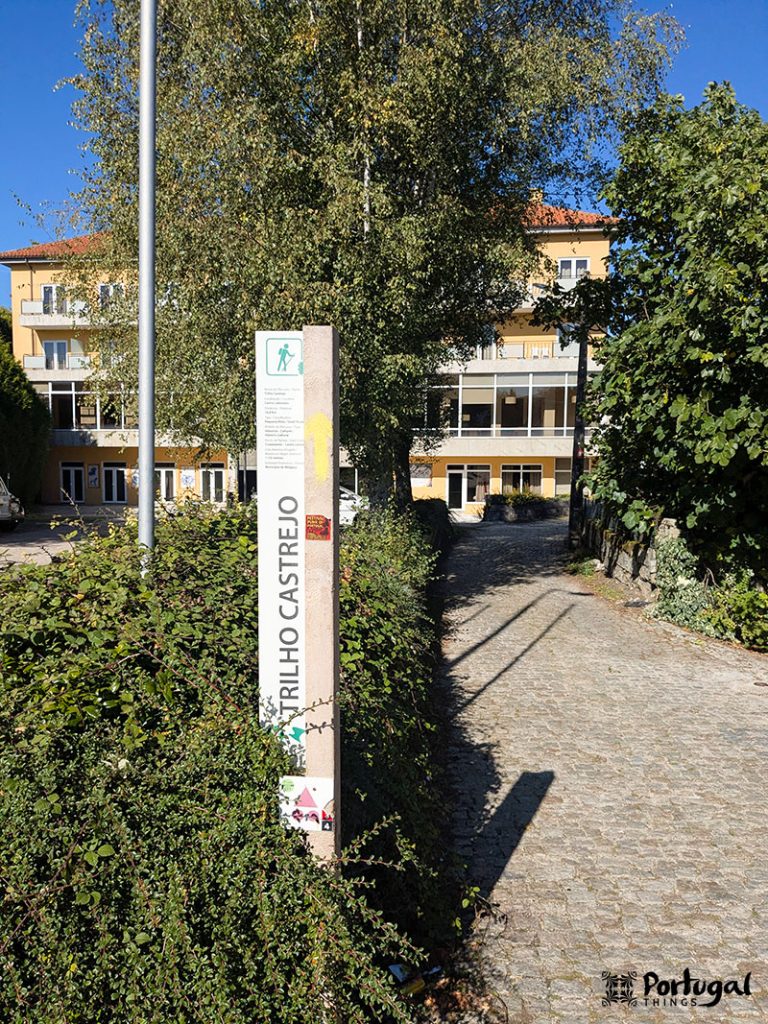
Our Experience on the Castrejo Trail
The Castrejo Trail – PR3 Melgaço is the most popular and well-known hike in the Castro Laboreiro area — and for good reason. It’s a long trail that takes almost a full day to complete, but it’s truly outstanding. In fact, as soon as we finished it, we decided it deserved a spot on our list of the best hikes in Gerês.
Stretching nearly 17 km (10.5 miles), the Castrejo Trail is circular and marked in both directions. We recommend hiking it counterclockwise, so the steepest climb doesn’t come at the end.
The trail starts right next to Hotel Castrum Villae and follows a rural path. The first two kilometers (1.2 miles) are quite easy — gently rolling and along wide tracks.
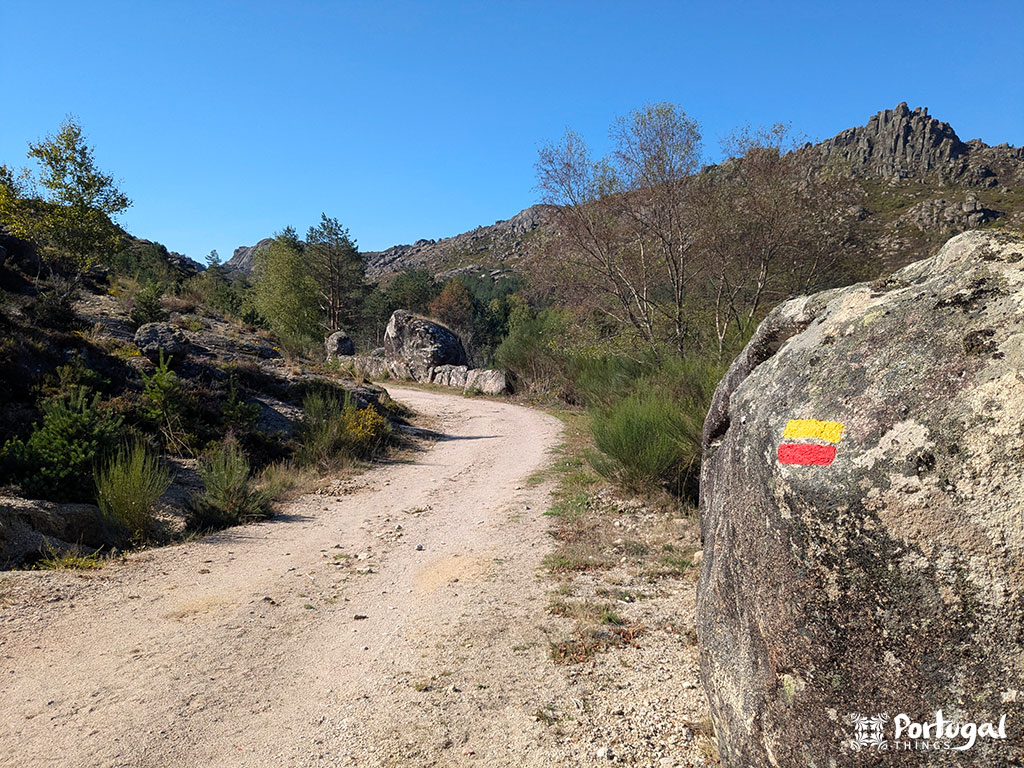
From there, we turn left and follow an old stone path that descends toward the Laboreiro River. Along the way, we pass through several Inverneiras (traditional winter settlements) and a mix of terrains — dirt roads, cobbled paths, and even a few short paved sections. Once we reach Assureira, the descent ends, and we cross the beautiful Ponte Nova (New Bridge).
If it’s a hot day, don’t miss the chance to take a dip in the river. The water is icy cold but absolutely irresistible! If you go a little further downstream from the bridge, you’ll find some inviting natural pools.
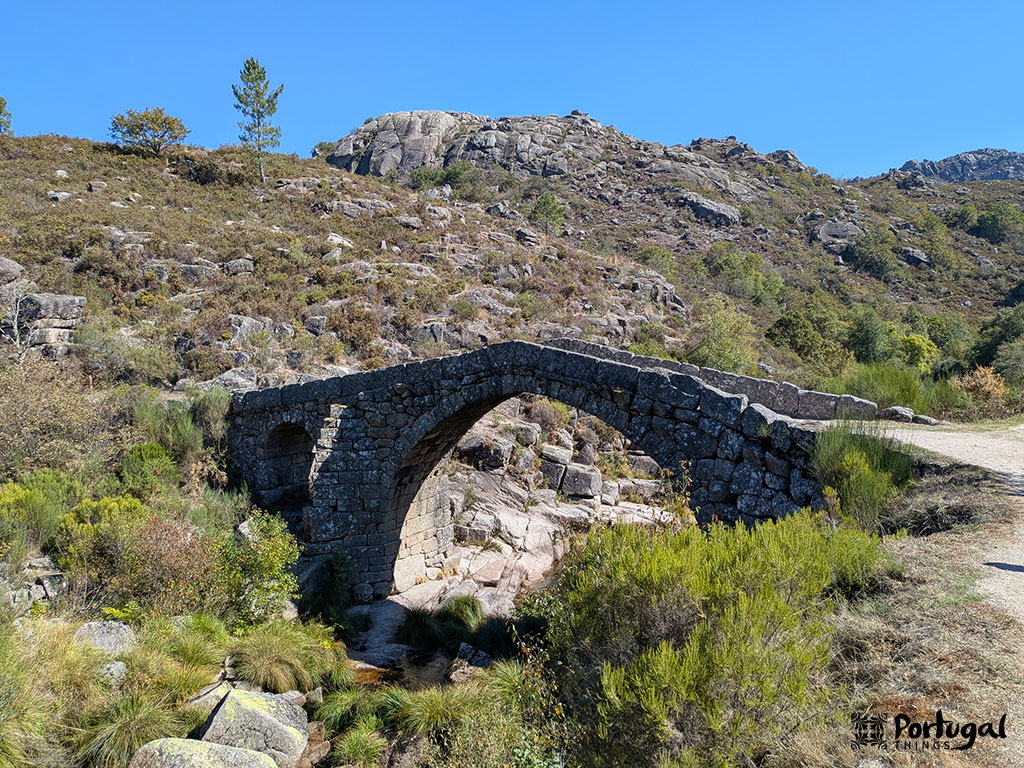
Just after the bridge, we start a long climb, with a short break in the middle. The first part of the ascent is relatively easy and takes us to the Inverneira da Curveira, where the trail descends for a few hundred meters.
After Curveira, the toughest climb of the trail begins, leading us close to Bico do Patelo, an interesting granite formation. In just 1 km (0.6 miles), we gain almost 200 meters (656 ft) of elevation! It was the most challenging part of the hike, and our legs really felt it, but the views and the sense of reaching the top made it all worth it.

From here, the trail becomes much easier. We follow several gently rolling tracks that can be walked at a good pace, allowing us to enjoy the granite mountain landscapes and the habitats of the Iberian wolf and the wild mountain goat. (Unfortunately, we didn’t see either — maybe next time!)
Continuing along the path, we reach Branda de Seara, the highest point of the trail at 1,121 meters (3,678 ft). From here, we begin a slow descent along rural and walled paths.
Around kilometer 13 (8 miles), we arrive at Cainheiras, where there’s a beautiful medieval bridge. We had a small mishap here: several large, unfriendly dogs appeared, one of them even quite aggressive. Be cautious, as it can be dangerous. We only managed to get through safely because we were a group of four.
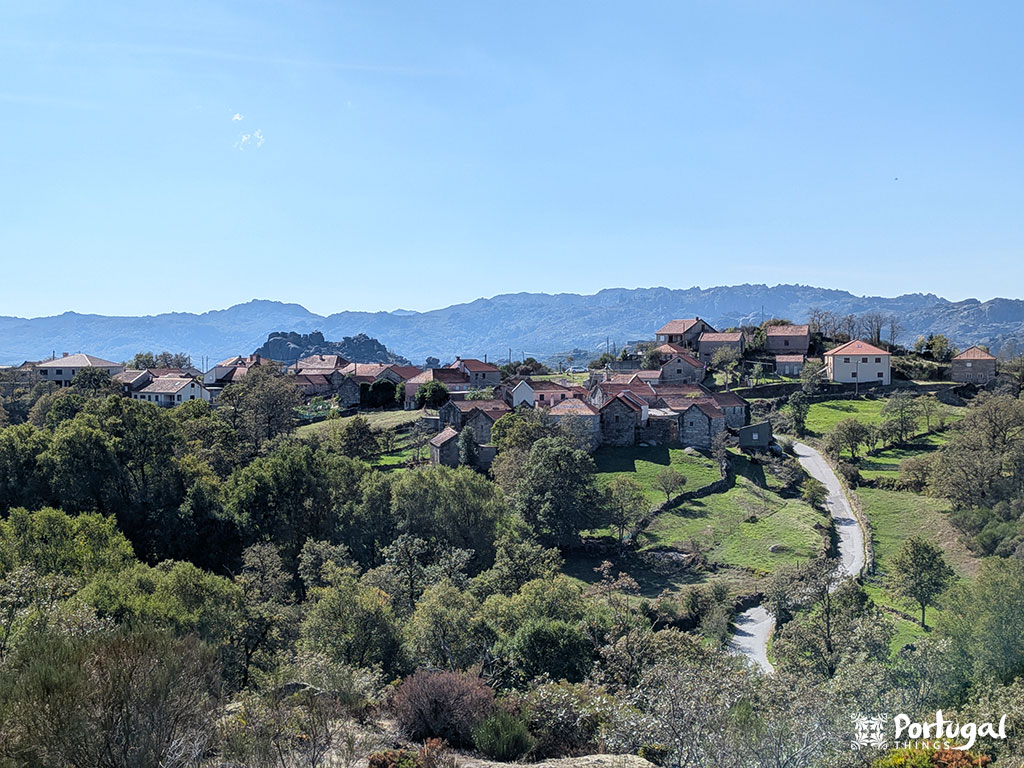
Alternate Route
If you don’t want to complete the full trail, there’s an alternate route that shortens it by about 5 km (3.1 miles). After the climb near Bico do Patelo (coordinates: 42.021675, -8.139019), you can cut directly to the village of Cainheiras and continue the trail from there.
After Cainheiras, we continue descending until we near Castro Laboreiro. The last points of interest are the bridge over the Laboreiro River, the vast valley, and the waterfalls that form there. The climb to the Castro Laboreiro bridge isn’t long, but it’s steep—and after 16 km (10 miles) already covered, it really took a toll on us!
From here, we’re back in the village and at the start of our trail.

Waymarking
This is one of the best-marked trails in the National Park — in fact, it’s probably among the best we’ve encountered recently. Still, be careful, as there are several intersections with other trails and paths.
Despite the excellent signage, we strongly recommend bringing a GPS, since it’s always possible to get distracted or miss faded markings.
Best Time of Year to Hike the Castrejo Trail
In our opinion, this trail is ideal for a sunny day during the shoulder seasons — that is, spring or autumn.
The Castrejo Trail is quite long and varied, with long sun-exposed sections offering little shade, as well as stretches through dense forest. On a hot day, completing the trail can be very challenging.
Additionally, some sections can become quite dangerous if the ground is wet or slippery, so it’s best to avoid hiking in winter or on rainy days.
Tip
Avoid foggy or rainy days, as certain sections act as runoff channels.
If you choose to hike in winter, keep in mind that the trail reaches altitudes above 1,000 meters (3,280 ft), so always check the weather and whether there’s snow.
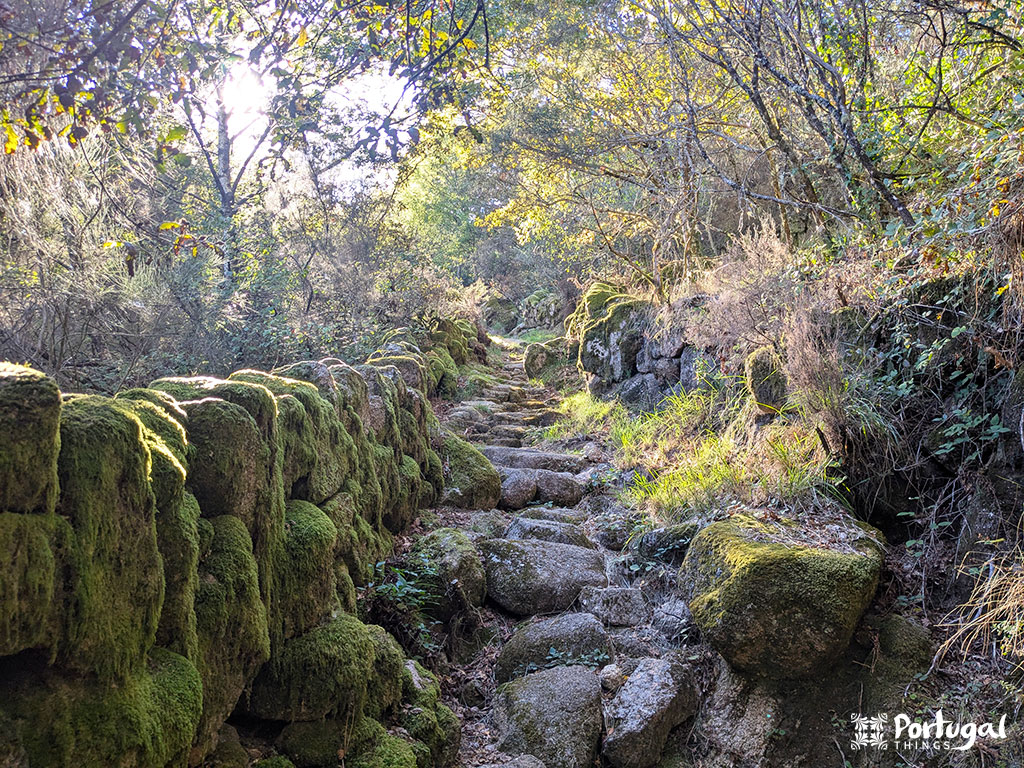
Who Can Hike the Castrejo Trail?
This is a physically demanding trail, mainly due to its length and accumulated elevation gain. In practice, there’s only one long, steep climb, but most of the trail involves continuous ascents and descents, with some sections quite steep.
We recommend this Short Route for mountain hiking enthusiasts, especially those with some experience and used to walking for 5–6 hours.
In general, it’s best to avoid hiking this trail with children or older adults, as it can be too challenging.

What to Bring on the Castrejo Trail
Despite its physical difficulty, this isn’t a particularly technical trail, so no special equipment is needed to complete it. I did the hike in running shoes without any issues, but hiking boots will make it easier.
Since the trail starts in Castro Laboreiro, you can take the opportunity to have a second breakfast and buy supplies in the village. We really liked the Castrensinha Pastry Shop, A Castrejinha.
We recommend bringing:
- Plenty of water (at least 2 L / 0.5 gal per person)
- Snacks
- Comfortable hiking shoes
- Comfortable clothing
- Rain jacket (in winter)
- Swimwear, sunglasses, hat, and sunscreen (in summer)
- Camera and mobile phone, as there are many great photo opportunities. Your phone can also be used as a GPS
- Small backpack to carry everything
As always, please don’t leave any trash behind. Bring back everything you carry with you.

How to Get to the Trail
The trail starts and ends in the village of Castro Laboreiro, right in front of Hotel Castrum Villae, making it easy to find, with nearby parking available.
The challenge is actually getting to Castro Laboreiro, as it’s a mountain village located at the far north of the National Park. The roads aren’t bad, but the journey can take quite some time.
In our experience, expect about 2–2.5 hours from Porto, over 1.5 hours from Viana do Castelo, and around 30 minutes from Melgaço, the nearest town.
Additionally, the fastest route often passes through Spain, crossing the border at Lindoso and then heading north to Castro Laboreiro. If you go via Soajo and Peneda, it takes even longer, but the drive is very scenic!
Where to Stay When Hiking the Castrejo Trail
Given the distances and travel times to reach Castro Laboreiro, we suggest staying overnight. The village is extremely charming — one of our favorites in Gerês — and offers several accommodations, restaurants, and even a good pastry shop.
You can also take the chance to explore other activities, such as visiting Castro Laboreiro Castle, one of the oldest castles in Portugal.
If you decide to stay in Castro Laboreiro, we recommend Hotel O Miradouro do Castelo. It’s our favorite in the village and also has an excellent restaurant, with stunning views of the castle and the valley.
Alternatively, there’s Hotel Miracastro, where we haven’t stayed but it has good online reviews. Check more information here.
You can also check out our Where to Stay in Gerês post, where we discuss the best areas to stay in the national park and give more hotel recommendations.
Pin it for later!

